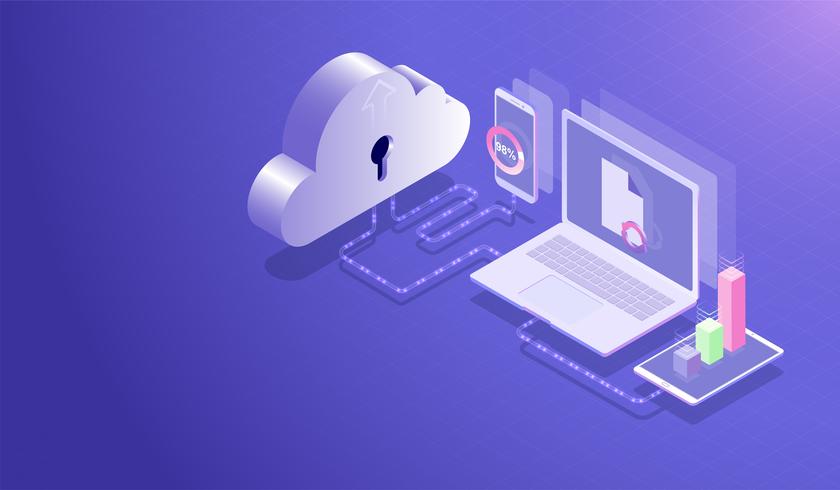Boy, wasn’t it fortuitous that the cloud rolled in just before remote work became the majority experience?
The real enabler behind the virtual office, cloud computing has become hugely relevant as humans disperse but continue to collaborate. There’s nothing like a global pandemic declaration to push many companies currently on the fence to migrate to the cloud. Cloud computing is now mainstream, with the vast majority of organizations in the cloud and loving it.
So timeous, so fortuitous, companies can find that their seamless workflow in the cloud isn’t what it should be. For one, the cloud is unforgiving of dated protocols, yet it’s remarkable how much superfluous and positively silly stuff is applied to the cloud. First checkpoint for great cloud computing: utilize the cloud for what it is and understand its security and other protocols – have peace!
It’s true this kind of lackluster cloud experience is usually manifest where companies never formulated a clear strategy for the cloud, but rather migrated and stood up and looked around. The descent route is to be ready to manage all the elements that comprise cloud computing – to identify them and have a strategy in place. Maintaining your cloud infrastructure with competent IT support firms like EC-MSP then becomes the pleasure it can be, for the tremendous flexibility it provides.
A checklist for cloud preparedness
Security comes first, and you’ll need to set up login protocols for users. Alongside two-factor authentication are a host of security options, up to and including a third-party identity provider. Establish a protocol that is both user friendly and secure, and all’s well. That said, insist that everyone follows best practice when generating passwords – no generic or easy passwords. Application Programming Interfaces (API) controls need to be applied for each app integration because while APIs boost cloud functionality, integrating desired third-party apps presents as a potential breach point. You’ll also want audit logs and perhaps other tailored analytics running for constant monitoring.
Secondly, believe it or not, the heavenly cloud option still runs very much on human support, especially when you need it. Make sure that the cloud option you choose has vibrant support – it’s essential. The best platforms offer engineers on call 24/7, but be aware that cloud support is specifically around cloud issues – there is no even slight overlap into your data or company issues, something users need to get straight and accept in migrating to the cloud. Go Premium Package on the platform and get the best support – platforms by design or otherwise prioritize their premium clients.
Thirdly, user provisioning needs to be calculated and clear. Allow access based on need-to-know and must-have-for-my-role dictates. Don’t allow a sea of eyes everywhere. No need to be paranoid, just scientific in approach. Institute protocols for adding to access as well as revoking it should someone leave the company. Upgrades are a penultimate primary consideration, since security and overall functionality hinges on current IT. On some platforms, they’re automatically enacted, whereas on others you might need to make time to do so. Establish how much time and how often more or less updates are coming out, in the case of manual updates being needed.
Finally, backups, backups, backups – find out whether your SP is backing up religiously for you or whether backups are your responsibility. If it’s at the discretion of the company, once a week is a good average recommendation.
Cloud infrastructure is still infrastructure
Remote “maintenance” starts to solidify in understanding when you realize that, with the cloud, you have virtual components and machines in play, and while no one is going to be taking computers apart in a corner office, virtual PCs, servers, memory, storage hubs, routers and switchers constitute the many components of even basic cloud computing, and you need to understand them conceptually and in application. While of course, it’s a cinch in comparison to real-time tech staring you in the face, it still asks of us that we understand, maintain and guard the usage of these assets for the company’s benefit.
For the diligence of maintenance of your virtual infrastructure, whether it be minimal or more cumbersome, there are of course the standard rewards for everyone in the cloud. It doesn’t cost much, as one primary benefit, and in fact, presents as a very low total cost when seen against the scalability and agility it gives business. It’s less an offset though than a blunt truth – the cloud is reasonably priced in comparison to, say, data, printer ink, or the latest iPhone.
That’s not an apples-to-apples comparison, but the point is the cloud isn’t a modern tech era manifestation that tries to make top-dollar out of everyone who knocks on the door. There is no real barrier to entry into the cloud, and costs seen extrapolated over the usual model should in fact come down.
Other key aspects of the cloud
What are your storage requirements; do you know? Can you know?
If you’re unsure, you need to establish this.
A Premium subscription very often offers unlimited storage, but you need to have that information clear for future needs. Another consideration (although it’s hardly a thing amongst the better SPs), is reliability. Nowadays, this is usually outlined as top-notch by the presence of a 99.9 percent SLA, and all SPs in the top tier have just this kind of SLA.
In a nutshell, your cloud strategy needs to build on controls in the form of user administration and security protocols. It’s typically easy to marry compliance requirements into cloud computing, as the platforms have been built enterprise-current and ready, but do check that your particular privacy terms are met in your choice of platform. That doesn’t mean paste a whole bunch of slowing and irrelevant protocols at the gate, but simply gain the peace of mind of knowing that you’re secure in the cloud.












Comments